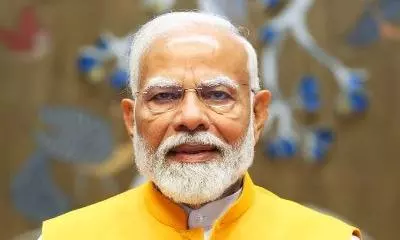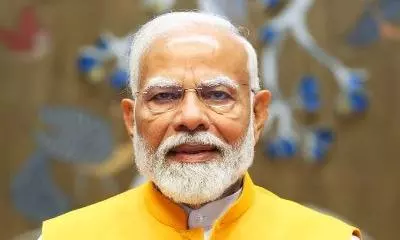
The supporters of Prime Minister Narendra Modi have been vocal about their disappointment with the Budget. Especially those aspects which relate to the middle class, and in this case taxation and sale of property. It is unusual to see them complain because they are usually steadfast in their backing of him no matter what. Issues such as Manipur or Ladakh can be raised by opponents or dissenters, but they do not seem to upset the set of people referred to as “bhakts” too much.
They tend to accept eccentric moves made by the government. The line “Modiji ni kiya hai to soch samajh kar hi kiya hoga” is a meme on the Internet. This is the reason why their being upset is a matter of interest to us. The question is: do they have any reason to be upset? I am not talking about the Budget itself, but about the expectations. If one thinks one’s party stands for something and then it does something different, then one has reason to be upset.
What do people who support and vote for the BJP think it stands for when it comes to the economy?
The only way to understand this is to go to the party’s manifestos across the decades. The fact is that starting from its formation in 1951, there is nothing in the manifestos of the Jan Sangh that has consistency or anything discernible as an economic ideology or any ideas about how Hindutva would influence the State. The manifestos are a collection of rambling and inchoate pronouncements. There is no particular thrust that the Jan Sangh favoured when it came to the economy, even at the most basic level. The party manifestos say it would develop an economic system that would not undo State enterprises, meaning public sector units, but would give private enterprises their proper place. It should be noted that the party’s constitution (Article 2) says that the BJP swears by socialism.
Swadeshi meant giving subsidies to local industries and also tariff protection. This is not the open market, free economy style, that Modi supporters assume that he stands for. The manifestos said that the import of consumer goods and luxury goods would be discouraged. Labour rights, including strikes and lockouts, would be discouraged. In 1957, the party announced it would introduce “revolutionary changes” to the economic order, which “will be in keeping with Bharatiya values of life”. However, these were not elaborated on nor was this theme of revolutionary change picked up again in any future manifesto.
In 1967, the party said it backed the idea of a planned economy, but would tweak the plan and “adopt the system of micro-economic planning region-wise and project-wise”. It sought State intervention, but not everywhere. It encouraged private investment, but definitely not in the defence sector. The party said that “laissez-faire belonged only to the Krita Yuga” (also called Sat Yuga, the first ideal era when the gods themselves governed the earth). The State must accept responsibility of ownership and management in certain spheres of the economy.
In 1954, and again in 1971, the Jan Sangh resolved to limit the maximum income of Indian citizens to Rs 2,000 per month and the minimum to Rs 100, maintaining a 20:1 ratio. The party said it would continue working on reducing this gap till it was 10:1, which was the ideal gap, and all Indians could only have incomes inside this range. Additional income earned by individuals over this limit would be procured by the State for development needs “through contribution, taxation, compulsory loans and investment”.
The party would also limit the size of residential houses in cities and not allow plots of more than 1,000 square yards. Contrast this to the slogan of “minimum government, maximum governance”, and notice there is no consistency and no reason given for why the party shifted from one position to another.
The Jan Sangh first stood for mechanisation of agriculture but then almost immediately opposed it in 1954 (because the use of tractors would mean bullocks would get slaughtered). It wanted industry to calibrate its use of automation not based on efficiency but how many more individuals it could hire. It did not explain why a businessman should or would want to add to cost rather than reduce it.
In 1971, it said it wanted no automation in any industry except defence and aerospace. I was reminded of this when I saw a headline this week over an interview with the finance secretary. The headline was: “There’s a nudge for industry to opt for less automation, use more labour”.
This is what we were told we were moving away from after 1991, but if we look at the BJP/Jan Sangh’s manifestos, it is not surprising.
Through the 1950s, 1960s, 1970s and 1980s, of course, the party was merely responding to Congress manifestos of the time and had nothing real to offer of their own. Nor did they think they needed to: with a national vote share that till 1989 was in the single digits, the BJP knew it would not be in power, would not need to implement a policy and, therefore, was free to say whatever came to mind. And it did. Now that it has firmly been established as the dominant force in Indian politics, people take it more seriously. Its voters assume there is some grand strategy or at least some basic philosophy behind “Modinomics” and that this will show in the Budget. Alas, this is not so. And if as a supporter and voter you assumed that there was, it is hardly the fault of the leader.
